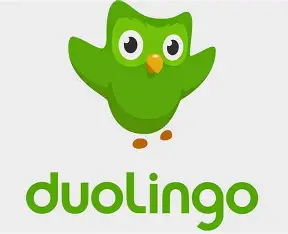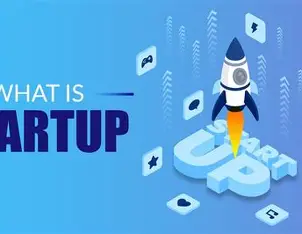
Table of Contents
Introduction: Everyone Starts Somewhere
Whether you’re launching your dream app from your bedroom, designing handmade jewelry at your kitchen table, or brainstorming with co-founders over coffee, one thing is true — every iconic brand you admire once started from zero.
Apple began in a garage. Airbnb started by renting out air mattresses. Nike was once Blue Ribbon Sports. None of these companies had overnight success. What they did have was a clear vision, relentless consistency, and a brand strategy that evolved with them.
This blog will walk you through real lessons from startups that built powerful brands from scratch, and how you can apply the same principles — even without a huge budget or team.
1. Start With Why: Clarity of Purpose Is the Foundation
“People don’t buy what you do; they buy why you do it.” — Simon Sinek
Lesson from: Patagonia & Warby Parker
These brands didn’t just sell jackets or eyeglasses — they sold values. Patagonia stands for sustainability; Warby Parker for accessibility and social good. From day one, they made their purpose the core of their brand.
💡Takeaway:
- Define your “why” clearly before designing logos or picking colors.
- Write a mission statement that emotionally connects with your ideal audience.
- Let your brand purpose guide every business decision.
2. Focus on a Specific Problem and Niche
Trying to be everything to everyone is the fastest way to become forgettable.
Lesson from: Slack
Slack wasn’t built to be a universal chat app. It was designed specifically for internal business communication. By solving a real pain point for remote teams, they nailed their niche and expanded from there.
💡Takeaway:
- Identify a focused target market first.
- Build your brand identity around solving that specific customer problem.
- Be the best at one thing before expanding into others.
3. Build Brand Identity With Consistency
Your brand is not just your logo — it’s the tone, visuals, and values your audience experiences at every touchpoint.
Lesson from: Glossier
Emily Weiss started with a beauty blog (Into the Gloss) before launching Glossier. She knew her target audience so deeply that every product, caption, and packaging felt like it was made just for them.
💡Takeaway:
- Choose a tone of voice and stick with it across platforms.
- Develop a consistent visual identity: fonts, colors, imagery.
- Let your brand be recognizable even without your name attached.
4. Start Small, But Brand Big
You don’t need a million-dollar campaign. But you do need big energy — even with limited resources.
Lesson from: Gymshark
Ben Francis started Gymshark in his bedroom. He sent free products to fitness influencers before “influencer marketing” was even a term. This scrappy yet ambitious branding move gave Gymshark viral traction early on.

💡Takeaway:
- Use micro-influencers or UGC to build initial buzz.
- Create branded packaging or thank-you notes — small touches matter.
- Always act like the brand you want to become.
5. Build a Community, Not Just Customers
The most successful startups don’t just sell — they build tribes.
Lesson from: Notion
Notion built a passionate community through early-access invites, templates shared by fans, and a loyal Twitter following. Their branding was not just what they said — but what their users created around them.
💡Takeaway:
- Involve your audience in your journey (polls, beta testing, shoutouts).
- Share your behind-the-scenes process — it humanizes your brand.
- Empower user-generated content and let your customers be your brand ambassadors.
6. Tell Your Story Over and Over Again
Your brand story isn’t a one-time Instagram post. It should live everywhere: on your website, your pitch deck, your packaging, your social captions.
Lesson from: Airbnb
Airbnb’s founders kept sharing the story of how they couldn’t pay rent and decided to rent out their air mattresses — the story gave their brand heart and helped them raise investor capital.
💡Takeaway:
- Your origin story matters. Don’t polish it too much — authenticity wins.
- Use storytelling in pitches, social posts, even product pages.
- Stories connect more than stats ever will.
7. Be Visibly Customer-Obsessed
When you’re just starting out, one good customer review is more valuable than 100 ads.
Lesson from: Zappos
Zappos built its brand around customer service — famously upgrading shipping without charging extra or helping customers find shoes from competitors if they were out of stock.

💡Takeaway:
- Go above and beyond for your early customers — they’ll remember it.
- Share positive feedback publicly (with permission).
- Fix mistakes transparently. People don’t expect perfection, they expect honesty.
8. Adapt Fast but Stay Rooted
Your product might evolve. Your logo might change. But your brand values must stay rooted.
Lesson from: Canva
What started as a tool for students to create yearbooks became a global design platform. Canva adapted its product over time, but always stayed rooted in empowering anyone to design.
💡Takeaway:
- Rebranding is fine — but don’t lose your “why.”
- Evolve based on feedback without diluting your essence.
- Be open to pivoting without re-inventing your brand identity every time.
9. Measure What Matters (Brand Metrics Matter Too)
You can’t improve what you don’t track.

Lesson from: Duolingo
Duolingo tracks brand sentiment like a hawk — from app store reviews to viral TikToks. Their fun, sassy owl persona is no accident — it’s measured branding.
💡Takeaway:
- Track brand awareness, social mentions, NPS scores, and engagement — not just sales.
- Set branding KPIs like “followers to website visits” or “referral rate.”
- Build feedback loops so you can keep improving your customer perception.
10. Don’t Try to Be Perfect — Try to Be Relatable
Startups that connect emotionally often beat startups with better features.
Lesson from: Bumble
Bumble leaned into realness — awkward DMs, dating anxiety, women-first communication. Their brand feels human, not corporate.
💡Takeaway:
- Show the human side of your brand — team intros, bloopers, founder struggles.
- Use conversational language. Ditch the jargon.
- Your brand voice should feel like a person, not a press release.
Krishna bansal% – Content writer
Real Tools and Tactics to Build Your Brand from Zero
Let’s get tactical now. Here’s how to bring all these lessons into action:
| Phase | Action | Tools |
|---|---|---|
| Discovery | Define your “why”, vision, mission | Notion, Miro, Google Docs |
| Identity Design | Build your logo, colors, typography | Canva, Looka, Adobe Express |
| Audience Building | Pick one platform, show up daily | Instagram, LinkedIn, TikTok |
| Community Growth | Engage, reply, share UGC | Buffer, Hootsuite, Intercom |
| Content Creation | Start a blog, podcast or series | Substack, Anchor, Medium |
| Feedback Loop | Measure and listen | Typeform, Google Forms, Brand24 |
FAQs: Building a Brand From Zero — Lessons from Successful Startups
1. I’m just starting out. Is branding really that important in the early stage?
Yes! Branding isn’t just about logos or colors — it’s about how people perceive you. A clear, relatable brand helps build early trust, attract the right audience, and set you apart from competitors before you even scale.
2. How do I build a brand when I don’t have a budget?
Start with what you do have — your story, your values, and your vision. Use free tools like Canva for visuals, social media for voice, and your personal network to start spreading the word. Authenticity is your biggest early asset.
3. What should I focus on first: logo, name, or social media?
Start with your brand foundation — who you are, what you stand for, who you’re helping, and how. Once that’s clear, you’ll be better equipped to create a name, logo, and social media presence that’s actually aligned.
4. How long does it take to build a brand from scratch?
There’s no set timeline. Some startups gain traction in months, others take years. The key is consistency. Branding is a journey, not a one-time event — keep showing up with clarity and purpose.
5. How did successful startups brand themselves early on?
They focused on solving a real problem, connected emotionally with their audience, and didn’t try to be perfect — just real. Think Airbnb’s “Belong Anywhere” or Notion’s clean, human-first aesthetic. They didn’t copy — they stood for something.
6. What mistakes should I avoid while building my brand?
Avoid copying competitors, being inconsistent in your messaging, targeting everyone instead of a niche, or changing your brand tone frequently. Consistency builds recognition — confusion kills momentum.
7. How can I tell if my brand is resonating with people?
Pay attention to how people describe your product/service. Are they using your words? Are they referring others? Is your content getting engagement? If your audience is echoing your brand’s message — you’re doing it right.
8. Do I need a brand style guide right away?
A basic one helps — even if it’s just your logo, colors, fonts, and tone guidelines in a Google Doc. It keeps things consistent across platforms and helps future hires or collaborators stay on-brand.
9. Can personal branding help build my startup brand?
Absolutely. People connect with people. If you’re visible, relatable, and consistent as a founder, it directly benefits your startup’s brand trust — especially in early stages when the brand is often just you.
10. What’s the one piece of advice you’d give to new founders about branding?
Start small, but start with purpose. Don’t wait to “look professional” — aim to feel genuine. Your brand isn’t built overnight, but every touchpoint matters. Be clear. Be real. Be consistent.

Final Thoughts: Start Messy, Stay Consistent, Grow Authentically
You don’t need perfection. You need clarity. You need consistency. You need to care — deeply — about what your brand stands for.
Every successful startup started messy. Yours might too.
But if you focus on solving real problems, building authentic relationships, and showing up consistently — your brand will grow.
And one day, someone else will write a blog about your journey.